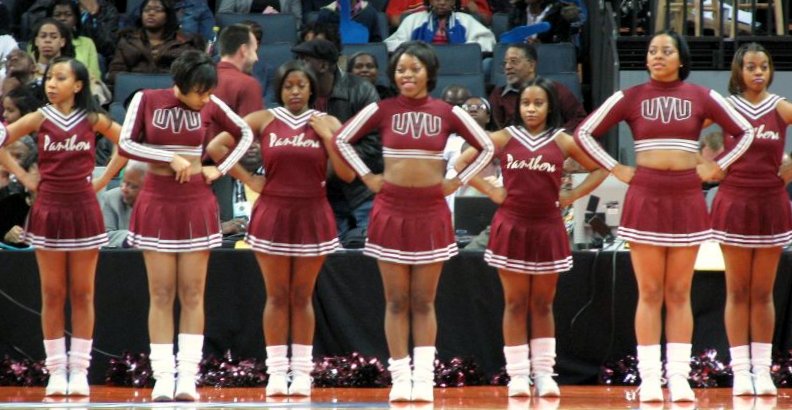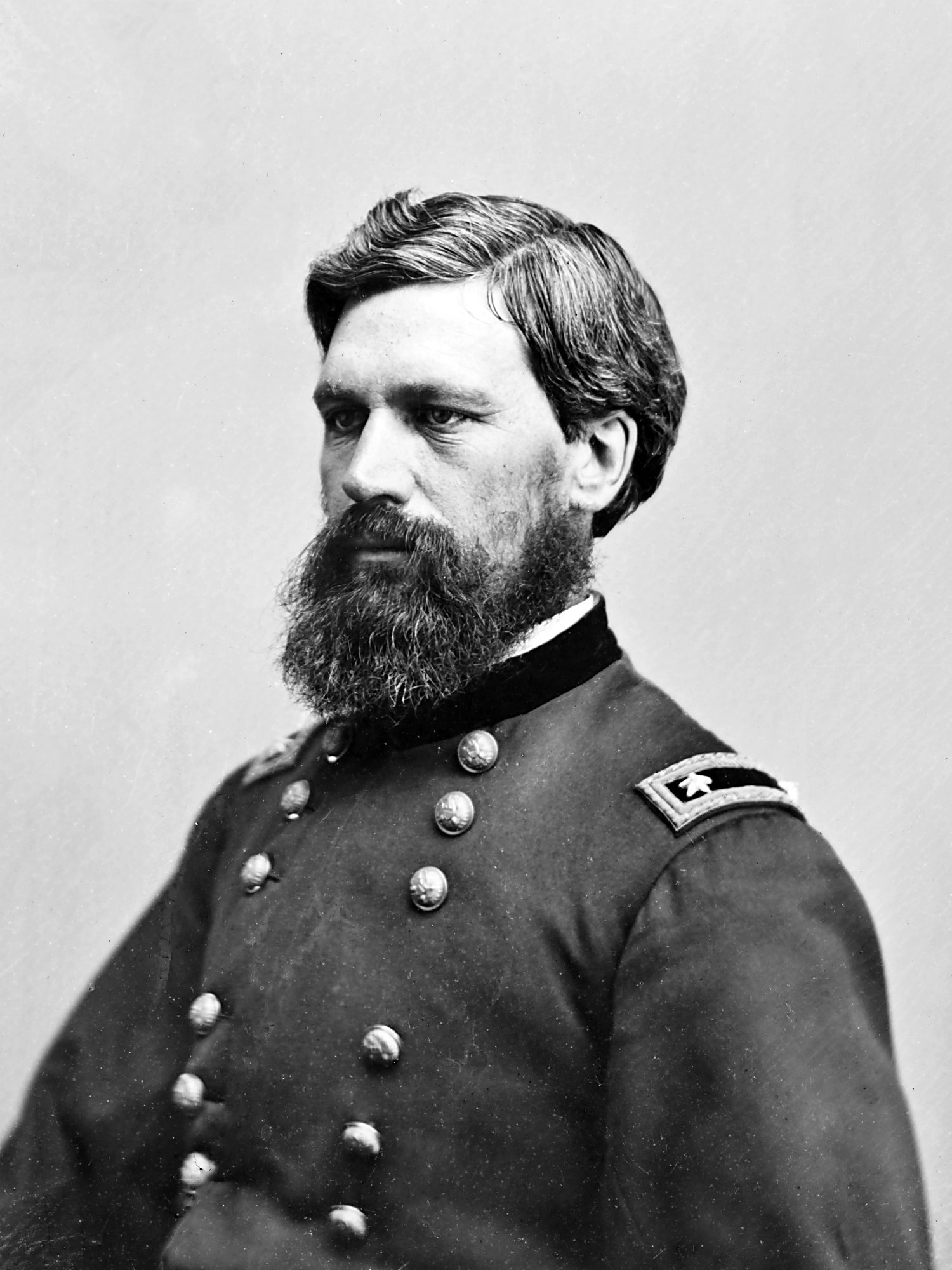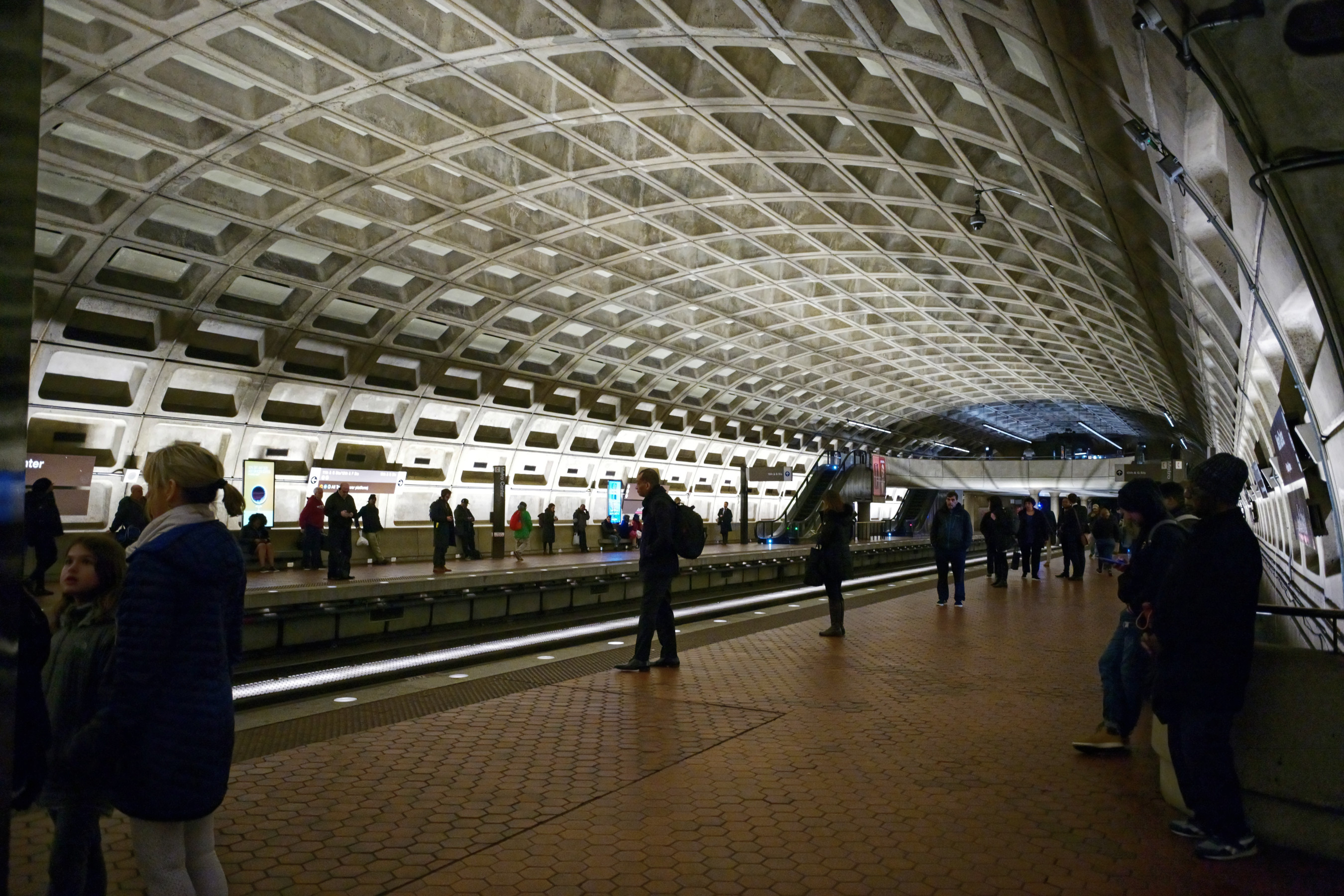|
Shaw University
Shaw University is a private historically black university in Raleigh, North Carolina. Founded on December 1, 1865, Shaw University is the oldest HBCU to begin offering courses in the Southern United States. The school had its origin in the formation of a theological class of freedmen in the Guion Hotel. The following year it moved to a large wooden building, at the corner of Blount and Cabarrus Streets in Raleigh, where it continued as the Raleigh Institute until 1870. In 1870, the school moved to its current location on the former property of Confederate General Barringer and changed its name to the Shaw Collegiate Institute, in honor of Elijah Shaw. In 1875, the school was officially chartered with the State of North Carolina as Shaw University. The main campus resides on 24 acres in the East Raleigh-South Park Historic District in downtown Raleigh. Shaw also owns and operates a 35-acre farm located on Rock Quarry Rd. Historical buildings, which either currently ( Estey ... [...More Info...] [...Related Items...] OR: [Wikipedia] [Google] [Baidu] |
Henry Martin Tupper
Henry Martin Tupper (April 11, 1831 – November 12, 1893) was an American Baptist minister who founded Shaw University in Raleigh, North Carolina. Beginning with bible and literacy classes in December 1865, it was the second university established for African Americans following the end of the civil war, and the oldest historically black college and university (HBCU) in the Southern United States, as well as one of the oldest co-educational universities in the country. When the institute moved into a new building in 1871, it was renamed as Shaw Collegiate Institute in honor of a major donor. Tupper served as the university's first president from its founding until his death in 1893. Early life and military career Henry Martin Tupper was born on April 11, 1831, to Earl and Permellia Norris Tupper and raised on a farm in Monson, Massachusetts. He was the eldest of nine children. His grandfather, Ezra Tupper, and great-grandfather, William Tupper, had both fought for the colonies ... [...More Info...] [...Related Items...] OR: [Wikipedia] [Google] [Baidu] |
Rufus Barringer
Rufus Clay Barringer (December 2, 1821 – February 3, 1895) was an American lawyer, politician, and Confederate brigadier general during the American Civil War. Early life Barringer was born in Cabarrus County, North Carolina, the ninth of ten children of Elizabeth Brandon and Paul Barringer. He attended the University of North Carolina at Chapel Hill, graduating in 1842. He studied law in Concord with his older brother, Daniel Moreau Barringer, who would enjoy a successful law practice and serve two terms in the U.S. House of Representatives. Their brother, Victor Clay Barringer, like Rufus later served as officer in the Confederate States Army. Entering politics as a Whig, Barringer represented Cabarrus County in the North Carolina House of Commons from 1848 until 1850. A Unionist in his political views, he represented his district as an elector during the 1860 presidential election.Warner, p. 17. As a young man before he married, Barringer is known to have had a r ... [...More Info...] [...Related Items...] OR: [Wikipedia] [Google] [Baidu] |
NCAA
The National Collegiate Athletic Association (NCAA) is a nonprofit organization that regulates College athletics in the United States, student athletics among about 1,100 schools in the United States, and Simon Fraser University, 1 in Canada. It also organizes the Athletics (physical culture), athletic programs of colleges and helps over 500,000 college student athletes who compete annually in college sports. The headquarters is located in Indianapolis, Indiana. Until the 1956–57 academic year, the NCAA was a single division for all schools. That year, the NCAA split into the NCAA University Division, University Division and the NCAA College Division, College Division. In August 1973, the current three-division system of NCAA Division I, Division I, NCAA Division II, Division II, and NCAA Division III, Division III was adopted by the NCAA membership in a special convention. Under NCAA rules, Division I and Division II schools can offer athletic scholarships to students. Divi ... [...More Info...] [...Related Items...] OR: [Wikipedia] [Google] [Baidu] |
Virginia Union University
Virginia Union University is a Private university, private Historically black colleges and universities, historically black university in Richmond, Virginia. History The American Baptist Home Mission Society (ABHMS) founded the school as Richmond Theological Institute in 1865 shortly after Union troops took control of Richmond, Virginia, at the end of the American Civil War, for African-American freedmen to enter into the ministry. The college had the first academic library at a historically black college or university (HBCU), building the library in 1865 which was the same year the college was established. Its mission was soon expanded to offer courses and programs at college, high school, and preparatory levels, to both men and women. This effort was the beginning of Virginia Union University. Separate branches of the National Theological Institute were set up in Washington, D.C., and Richmond, Virginia, with classes beginning in 1867. In Washington, the school became known ... [...More Info...] [...Related Items...] OR: [Wikipedia] [Google] [Baidu] |
Lincoln University (Pennsylvania)
Lincoln University (LU) is a public state-related historically black university (HBCU) near Oxford, Pennsylvania. Founded as the private Ashmun Institute in 1854, it has been a public institution since 1972. Lincoln is also recognized as the first college-degree granting HBCU in the country. Its main campus is located on near the town of Oxford in southern Chester County, Pennsylvania. The university has a second location in the University City area of Philadelphia Philadelphia ( ), colloquially referred to as Philly, is the List of municipalities in Pennsylvania, most populous city in the U.S. state of Pennsylvania and the List of United States cities by population, sixth-most populous city in the Unit .... Lincoln University provides undergraduate and graduate coursework to approximately 2,000 students. It is a member-school of the Thurgood Marshall College Fund. While a majority of its students are African Americans, the university has a long history of accepting ... [...More Info...] [...Related Items...] OR: [Wikipedia] [Google] [Baidu] |
Hampton University
Hampton University is a private, historically black, research university in Hampton, Virginia, United States. Founded in 1868 as Hampton Agricultural and Industrial School, it was established by Black and White leaders of the American Missionary Association after the American Civil War to provide education to freedmen. The campus houses the Hampton University Museum, which is the oldest museum of the African diaspora in the United States and the oldest museum in the commonwealth of Virginia. First led by former Union General Samuel Chapman Armstrong, Hampton University's main campus is located on in Hampton, Virginia, on the banks of the Hampton River. The university offers 90 degree programs, including 50 bachelor's degree programs, 25 master's degree programs, and 9 doctoral programs. The university has a satellite campus in Virginia Beach and also has online offerings. Hampton University is home to 16 research centers, including the Hampton University Proton Therapy Inst ... [...More Info...] [...Related Items...] OR: [Wikipedia] [Google] [Baidu] |
Howard University
Howard University is a private, historically black, federally chartered research university in Washington, D.C., United States. It is classified among "R1: Doctoral Universities – Very high research activity" and accredited by the Middle States Commission on Higher Education. Established in 1867, Howard is a nonsectarian institution located in the Shaw neighborhood. It offers undergraduate, graduate, and professional degrees in more than 120 programs. History 19th century Shortly after the end of the American Civil War, members of the First Congregational Society of Washington considered establishing a theological seminary for the education of black clergymen. Within a few weeks, the project expanded to include a provision for establishing a university. Within two years, the university consisted of the colleges of liberal arts and medicine. The new institution was named for General Oliver Otis Howard, a Civil War hero who was both the founder of the university an ... [...More Info...] [...Related Items...] OR: [Wikipedia] [Google] [Baidu] |
Brutalist Architecture
Brutalist architecture is an architectural style that emerged during the 1950s in the United Kingdom, among the reconstruction projects of the post-war era. Brutalist buildings are characterised by Minimalism (art), minimalist constructions that showcase the bare building materials and Structural engineering, structural elements over decorative design. The style commonly makes use of exposed, unpainted concrete or brick, angular geometric shapes and a predominantly monochrome colour palette; other materials, such as steel, timber, and glass, are also featured. Descended from Modernism, brutalism is said to be a reaction against the nostalgia of architecture in the 1940s. Derived from the Swedish phrase ''nybrutalism'', the term "new brutalism" was first used by British architects Alison and Peter Smithson for their pioneering approach to design. The style was further popularised in a 1955 essay by architectural critic Reyner Banham, who also associated the movement with the Fre ... [...More Info...] [...Related Items...] OR: [Wikipedia] [Google] [Baidu] |
Romanesque Revival Architecture
Romanesque Revival (or Neo-Romanesque) is a style of building employed beginning in the mid-19th century inspired by the 11th- and 12th-century Romanesque architecture. Unlike the historic Romanesque style, Romanesque Revival buildings tended to feature more simplified arches and windows than their historic counterparts. An early variety of Romanesque Revival style known as Rundbogenstil ("Round-arched style") was popular in German lands and in the German diaspora beginning in the 1830s. By far the most prominent and influential American architect working in a free "Romanesque" manner was Henry Hobson Richardson. In the United States, the style derived from examples set by him are termed Richardsonian Romanesque, of which not all are Romanesque Revival. Romanesque Revival is also sometimes referred to as the " Norman style" or " Lombard style", particularly in works published during the 19th century after variations of historic Romanesque that were developed by the Normans ... [...More Info...] [...Related Items...] OR: [Wikipedia] [Google] [Baidu] |
Leonard Hall (Shaw University)
Leonard Hall is a historic educational building located on the campus of Shaw University in Raleigh, North Carolina. Built in 1881 and originally named Leonard Medical Center, it became known as Leonard Medical School, and then Leonard Hall. It was established when medical schools were professionalizing and was the first medical school in the United States to offer a four-year curriculum. It was also the first four-year medical school that African Americans could attend. The building was named after Judson Wade Leonard, the brother-in-law of Shaw's founder Henry Martin Tupper. Classes began in 1882 and the annual tuition was $60, a substantial sum at the time. It is a contributing part of the East Raleigh-South Park Historic District, listed in the National Register of Historic Places in 1990. In 1994 it was designated a North Carolina Historic Landmark. Shaw University is the oldest historically black college in the South and often called the "mother of African-American colleg ... [...More Info...] [...Related Items...] OR: [Wikipedia] [Google] [Baidu] |
Italianate Architecture
The Italianate style was a distinct 19th-century phase in the history of Classical architecture. Like Palladianism and Neoclassicism, the Italianate style combined its inspiration from the models and architectural vocabulary of 16th-century Italian Renaissance architecture with picturesque aesthetics. The resulting style of architecture was essentially of its own time. "The backward look transforms its object," Siegfried Giedion wrote of historicist architectural styles; "every spectator at every period—at every moment, indeed—inevitably transforms the past according to his own nature." The Italianate style was first developed in Britain in about 1802 by John Nash, with the construction of Cronkhill in Shropshire. This small country house is generally accepted to be the first Italianate villa in England, from which is derived the Italianate architecture of the late Regency and early Victorian eras. The Italianate style was further developed and popularised by the a ... [...More Info...] [...Related Items...] OR: [Wikipedia] [Google] [Baidu] |
Second Empire Style
Second Empire style, also known as the Napoleon III style, is a highly Eclecticism in architecture, eclectic style of architecture and decorative arts originating in the Second French Empire. It was characterized by elements of many different historical styles, and also made innovative use of modern materials, such as iron frameworks and glass skylights. It flourished during the reign of Emperor Napoleon III (1852–1870) and had an important influence on architecture and decoration in the rest of Europe and North America. Major examples of the style include the Opéra Garnier (1862–1871) in Paris by Charles Garnier (architect), Charles Garnier, the Institut National d'Histoire de l'Art, the Saint-Augustin, Paris, Church of Saint Augustine (1860–1871), and the Philadelphia City Hall (1871–1901). The architectural style was closely connected with Haussmann's renovation of Paris carried out during the Second Empire; the new buildings, such as the Opéra, were intended as ... [...More Info...] [...Related Items...] OR: [Wikipedia] [Google] [Baidu] |







